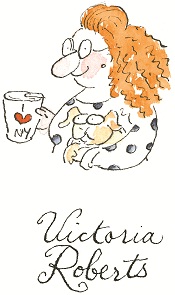 By Mike Harvkey | PW - Nov 16, 2012
By Mike Harvkey | PW - Nov 16, 2012
Where did the idea for this book come from? Did the narrative always come first, or were there instances where you wrote to the picture?
I had the scenario--what if a family fell through the cracks and ended up living in Central park--and notes for a long time. Then came the writing. Most things come from characters and dialogue. I usually draw afterwards. I had the places in the park picked out so I would go to the park and get the feel for them; that was the only visual thing I did early on. I realized after finishing that it was the story of my family, if the marriage between my mother and step-father hadn’t broken up. The dynamic of the family is the dynamic of my mother and my step-father, and my step-brother and I. The mother is very much my mother.
Was the book an easy or tough sell?
The book sold very quickly, in a week! In my mind, though, it was a hard sell in that it took me 25 years to get it out there, and another year to find a literary agent, which I did by sending the manuscript out cold. I was very fortunate to find Lindsay Edgecombe at Levine Greenberg. She’s an elegant old soul with extraordinary business acumen, which made actual sale of the book swift and painless. She knew where it belonged. But your editor makes all the difference. Amy Cherry understood that the manuscript had its own world and its own reality, that in its own way it was a true story. I have certain memories of childhood that probably are not true, but that is how I perceived them. Amy is not only important in choosing the book, but in its format, its design. I felt I needed a template for the book. Amy said no, that would be quite predictable. Amy and [designer] Barbara Bachman’s work with the text and illustrations maintained a delicate balance, and the book doesn’t look predictable.
Why is the narrator the brother and not the sister?
Because Alan is the real observer. For the entire 25 years I’ve had this in my mind, the narrator has always been Alan. The mother’s really dramatic, the father is off in his own world, and the sister is doing her shows.
Which explains your alter ego, Nona Appleby, who has her own YouTube channel. She first appeared as an often nude cartoon character in The New Yorker. Later you transformed her into a kimono-clad Australian octogenarian for the stage.
Which explains your alter ego, Nona Appleby, who has her own YouTube channel. She first appeared as an often nude cartoon character in The New Yorker. Later you transformed her into a kimono-clad Australian octogenarian for the stage.
I think Nona is my strongest suit. She’s my oldest character. I draw her, but without captions. She’s got more to say, so I like doing the videos. I was working with somebody on a theater piece for Nona and was asked about doing a play with the couple. I said no, just Nona. It depends on how complete the voice is that you have for these characters.
How did you maintain the whimsical tone you struck in After the Fall when the narrative is based on a family losing their home?
For years I didn’t see how I could do something funny about this scenario. About homelessness there was nothing funny. It was hard for me to figure out how to get them to be at home in the park and have that not be the horrible thing that is the reality of homelessness. Writing about the terrible things in life is not what I do, but it was important that I keep to their world. The story emanates from some very sad things, but the one thing we have as humans is hope. How else do you get through life?
No comments:
Post a Comment